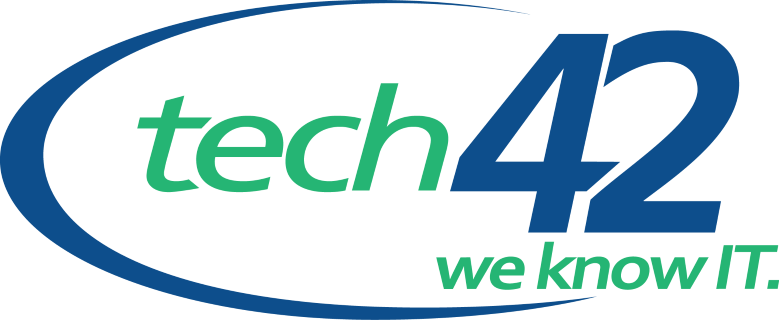Strategic Information Technology Planning in 2021
For many companies, finding the perfect balance between business best practices and complex computer systems is the ultimate deal-maker as far as revenue optimization goes. Often, this means keeping up with the non-stop software, hardware, procedural, and system changes.
And the reward? Businesses get to serve their customers better, thanks to increased access to information, employee engagement, and rapid response to changes and challenges. But to achieve all these feats, you first must devise a strategic IT plan to facilitate informed decision-making and realization of set goals.
In this section, we’ll expound on the significance of a detailed business technology plan, which includes:
- Business continuity
- Remote workforce empowerment
- Security enhancement
- Enhanced innovation and agility
Business Continuity
In a word, business continuity is the ability of a business to continue to deliver services and products amid a disruptive incidence. Operating a business comes with its fair share of risks that may cause a costly disruption and revenue loss when not planned for effectively.
Ask yourself, would your business survive and continue operating in the face of a disaster like theft, cyberattack, or fire? If the answer is no, then that’s a sign you need to leverage IT to draft a strategic business continuity plan.
If you don’t have an existing business continuity plan, your first assignment is to conduct an all-inclusive business processes assessment, map out the most vulnerable areas, and determine the potential loss if a risk was to occur. After knowing your business plus its weak links, you want to leverage that information to develop a proactive plan, which involves the following steps:
- Identify your goals and objectives – does your business continuity planning extend beyond managing the IT systems? If Yes, then capture the other functions as well.
- Gather an emergency preparedness team – These may include key business decision-makers who can add value to the risk management process.
- Conduct a business impact analysis – This goes beyond just identifying your company’s biggest potential threats; it also involves discussing and analyzing the potential impact of reducing, eliminating, or modifying critical business functions.
- Determine the essential services/functions that would potentially be impacted by a risk occurrence – These may include inventory management, customer service, supply continuity, order fulfillment, etc.
- Draft a strategic plan for every vulnerable business function – For instance, for inventory management and supply continuity, you must have viable options to consider if your primary shipping partner faces a disruption.
- Review to ensure you capture every business function in the plan.
- Continuously test, revise, and update the plan to stay on top of new trends and developments.
Remote Workforce Empowerment
Over the past couple of years, the work-from-home setup has been increasing in popularity worldwide, with businesses seeing it as a smart way to improve operations and save on costs. However, when COVID-9 struck, working from home became the new normal, with one office previously consisting of 100 employees suddenly turning to 100 offices distributed remotely.
Unfortunately, that also triggered the rise of cybercrime as data thieves and hackers saw an opportunity to target unprotected or unintentionally careless remote employees. Besides cybercrime, the remote workforce environment is also susceptible to other risks like system outages, network downtime, and project management.
Without proper IT planning, managing or mitigating the remote workforce challenges and threats can be a stumbling block, and the potential repercussions are unimaginable. Business leaders must empower the remote workforce by:
- Keeping them engaged and creating an environment where employees can raise their concerns and share their opinions.
- Providing periodic virtual training and mentorship to raise awareness on digital security best practices for keeping cybercriminals away.
- Equipping the workforce with the right resources they need to undertake business activities without compromising their security posture.
- Providing corporate applications that can be accessed effortlessly by the remote workforce.
Security Enhancement
A well-articulated business IT plan also helps in enhancing internal and external security. The goal is to determine how your business intends to leverage technology to stimulate growth then draft a security strategy to support the same.
To develop a strategic IT security plan, top executives like the chief information security officer (CISO) need to oversee all security-related business functions and unmask all the potential vulnerabilities. That’s the only way of improving your company’s security posture and mitigating risks.
Having a strategic security plan helps enhance decision-making, better aligning OT strategies with business practices, and keeping up with the ever-changing regulatory requirements. When fully developed, a strategic IT plan helps executives manage risks appropriately, foretell where the plan leads, and leverage it to execute vital tasks.
Innovation and Agility
In the business world, one thing’s for sure; consumer needs will keep changing seasonally as technology also advances every day. That’s why your business needs to practice strategic IT planning to keep up with the dynamism. A technology plan sets the foundation for coming up with new ideas and products to fulfill customers’ needs and becoming agile in implementing the same.
Developing an IT-enabled innovation plan involves:
- Defining your objectives. That is, what do you want to achieve with that innovation? And while at it, ensure you don’t deviate or contradict your long-term goals.
- Understanding your market thoroughly. Who are your customers, and how will the innovation help address their needs? To answer that, first, you must understand what happens in the market, i.e., what are your competitors up to? If they’ve previously come up with a similar innovation, how unique will yours be?
- Defining your value proposition. Your innovation should aim to create a competitive advantage by either saving your customers time or money. Therefore, you should plan to make your invention more durable, convenient for use, affordable, and value-optimized.
- Establishing your innovation systems and techniques. Executing your innovation plan in an agile and scalable manner requires you to define and gather the procedures and practices necessary to breathe life into the innovation.
Conclusion
Having a strategic business IT plan is cool, but that’s not the end of the road. You want to ensure that the strategies are aligned with your business processes and function. And another thing, be sure to break down your long-term goals into smaller units that are feasible within your preferred timeframe and budget. Finally, don’t forget to make it an ongoing process to keep pace with external forces like market disruptions.
Have you completed your 2021 IT plan already? If NOT, it’s not too late as we can help. Contact us to schedule a no-obligation virtual meeting with our tech professionals, and let us help you develop a sustainable technology plan.







